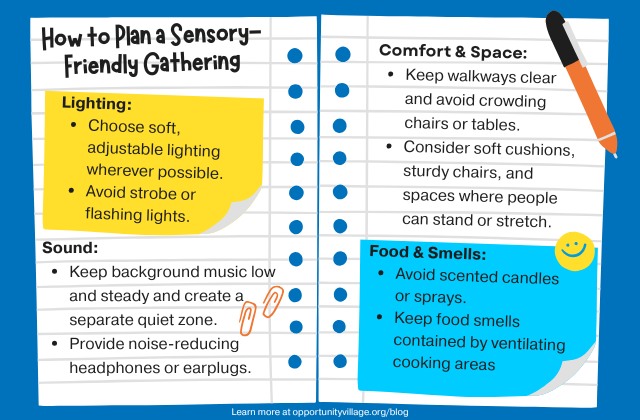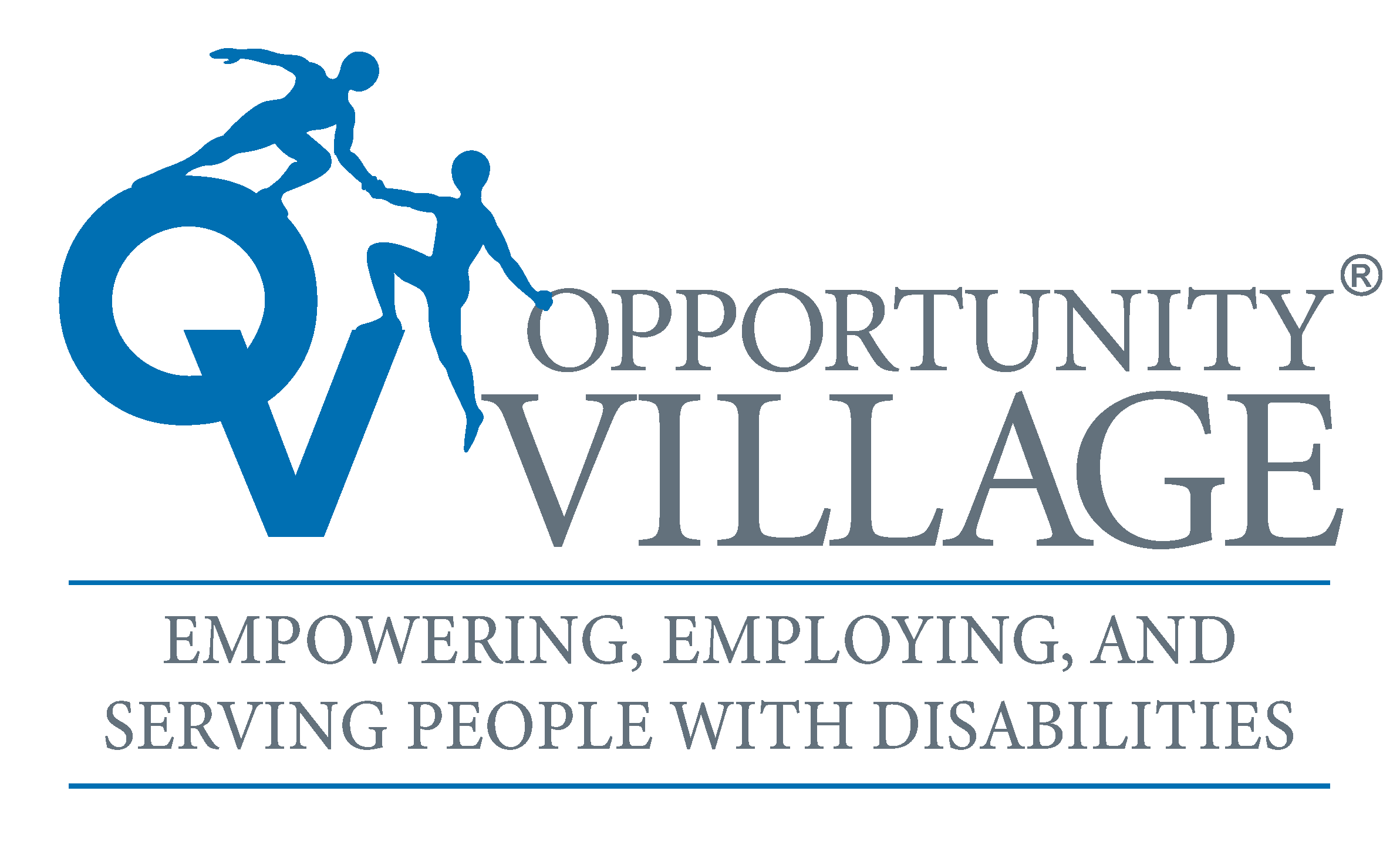
Simple ways to make every guest feel comfortable, welcome, and included
When planning an event, it’s easy to get caught up in the perfect decorations or the tastiest food. But the best gatherings happen when people simply feel at ease together. So, try making this your goal: everyone feels welcome, comfortable and part of the fun.
That’s when hosting a sensory-friendly event becomes the aim and it’s time to think more deeply about the lighting, sound, and activities. Are they designed so all guests can enjoy themselves?
Small adjustments make a big difference for people with sensory sensitivities. From quiet corners to soft lighting and flexible schedules, sensory-friendly party planning is about one simple idea — inclusion. The following tips apply to both kids’ and adult gatherings (everyone deserves to celebrate comfortably).
Understanding Sensory Sensitivities
If you’ve ever walked into a room where the music was too loud or the lights suddenly felt too bright, you’ve had a small taste of what sensory sensitivities can feel like. For some people, that experience isn’t just uncomfortable; it can be overwhelming.
Sensory sensitivities happen when the brain receives more information than it can easily process. Sounds, sights, textures, or smells that seem minor to one person can feel intense or even painful to another. This can make it hard to focus, join a conversation, or stay in a busy space for long.
Common triggers include:
- Lighting: flashing, flickering, or harsh overhead lights.
- Noise: loud music, overlapping conversations, or sudden bursts of sound.
- Crowding: limited personal space or constant movement nearby.
- Smells or textures: strong scents, perfume, or certain fabrics and surfaces.
People with sensory sensitivities might include people with autism or ADHD, sensory processing disorders, or those living with PTSD. But these sensitivities can affect anyone. Fatigue, anxiety, or stress can make anyone’s senses more reactive for a while and understanding them isn’t about labeling, but creating comfort and belonging for everyone.
And that’s the heart of hosting well. When you design your event with awareness and flexibility, you’re making space for everyone to enjoy it.
With that understanding, let’s look at how to plan a sensory-friendly event that brings people together comfortably and confidently.
How to Plan a Sensory-Friendly Event
You know by now that the goal isn’t to plan a perfect event. It’s to create an environment where everyone can relax and join in comfortably. There are five main things to consider.
Lighting
Lighting sets the mood (and can make or break comfort for some guests). Gentle lighting reduces sensory overload before it starts.
Choose soft, adjustable lighting wherever possible. Think: lamps, string lights, or natural daylight rather than overhead fluorescents.
Avoid strobe or flashing lights and, if possible, create lighting zones — brighter in activity areas, softer where people rest or chat.
Sound
Noise is one of the biggest triggers for sensory discomfort. Consistent sound levels can make conversation easier and help guests feel safe and in control.
So, try to keep background music low and steady and create a separate quiet zone. This doesn’t have to be elaborate; you can use a nearby room, corner, or outdoor space. Just somewhere people can go to step away and reset.
You could also have noise-reducing headphones or earplugs available, especially if you’re hosting children or larger crowds.
Comfort and Space
How you set up the room affects how people feel. Clear, flexible space lets people choose how they participate.
Give everyone space to move — keep walkways clear and avoid crowding chairs or tables. This helps you ensure accessibility, too. Provide wider aisles, stable flooring, and easy access to restrooms.
Where possible, try to mix seating types. Consider soft cushions, sturdy chairs, and spaces where people can stand or stretch.
Food and Smells
Even good smells can overwhelm the senses. You might be tempted to burn your favorite candle, but for a sensory-friendly event, you should try to avoid scented candles or sprays.
Keep food smells contained by ventilating cooking areas or serving food in waves. Make sure you also offer some simple, plain food options and label ingredients clearly, especially for common allergens (nuts, dairy, gluten).

Communication and Preparation
Good communication is one of the most powerful tools for inclusion. When people know what’s likely to happen, it becomes predictable. And predictability reduces stress and makes participation easier for guests of all abilities. There are four things you can do to support this:
- Share details ahead of time. A simple invitation or message that outlines what to expect (timing, food, activities, quiet zones) helps guests plan and feel safe.
- Use clear, positive language. Instead of “don’t be late,” try “we’ll start around 2 p.m., and you’re welcome anytime after 1:45.”
- Ask about comfort needs early. When people can tell you what works best for them (lighting, music, or space), you can plan with confidence and they will feel more confident, too.
- Consider sending a visual schedule or event outline for guests who prefer structure or need time to adjust to transitions.
You can see that planning a sensory-friendly gathering isn’t about doing less or dulling down your event (far from it!). You’re simply planning more thoughtfully in order to be more inclusive.
Now that you’ve thought about your space, let’s look at some fun ideas for activities that engage without overwhelming.
Sensory-Friendly Activities
Once your space feels calm and welcoming, it’s time to think about what to do together. The best sensory-friendly activities are simple and flexible (whether guests join in quietly or dive right in).
We have a few ideas to get your inspiration flowing.
Create art or craft tables
Offer a few materials with different textures (try smooth paper, soft felt, or clay). Your guests can draw, paint, or just enjoy the feeling of creating something by hand.
Set up calming games
Puzzles, sensory bins, or sorting games work well because they give people something to focus on without too much noise or pressure.
Add gentle movement
Think stretching, dancing, or a short walk outside. Gentle movement can help reduce stress.
Encourage connection
For adults, try conversation cards, trivia, or a quiet lounge with cozy seating and light music. These low-stimulation spaces encourage connection because there’s less sensory overload.
Quick tip: Always offer a choice. Some guests might enjoy hands-on fun, while others are happier watching or chatting nearby. Both count as participation.
Sensory-Friendly Birthday Party Ideas for All Ages
Birthdays are a perfect time for inclusion. We have good news here — with a few thoughtful tweaks, any party can become a sensory-friendly event (and a lot more fun for everyone).
For Kids
- Keep the guest list small or stagger arrivals so the space doesn’t feel crowded.
- Use calm lighting and music-free playtime for part of the event.
- Offer sensory-friendly party favors like fidget toys, bubbles, or soft plushies.
- Try gentle themes that invite curiosity (think nature, art studio, or outer space).
Your aim: predictability and calm, to help children feel confident first, and then free to join the fun at their own pace.
For Adults
- Plan brunches or afternoon teas instead of noisy evening events.
- Include creative stations with calming (but gently challenging) activities like candle-making, flower arranging, or painting.
- Host a movie night with subtitles, adjustable volume, and plenty of comfortable seating.
Whatever your final plan, remember that without overstimulation, simple settings and flexible activities make social time easier to enjoy. You’re trying to build connection and the feeling that everyone belongs. And that brings us to our final point.
Empowerment Through Inclusion
These small acts of thoughtfulness ripple outward. They ease anxiety, spark connection, and help guests stay longer and laugh more — truly enjoying the moment. It’s the kind of care that turns an event into a great memory, and a group of people into a community.
At Opportunity Village, we’ve seen firsthand how small changes can transform experiences for people with developmental and intellectual disabilities. Whether it’s during one of our sensory-friendly activities in our Arts & Recreation program, or right at home in your living room, inclusion makes every celebration brighter. Everyone belongs. And that’s when truly magic connections are made.
Happy planning. For even more ideas, read about hobbies and activities for adults with disabilities or discover sensory-friendly ideas for activities in Las Vegas.






